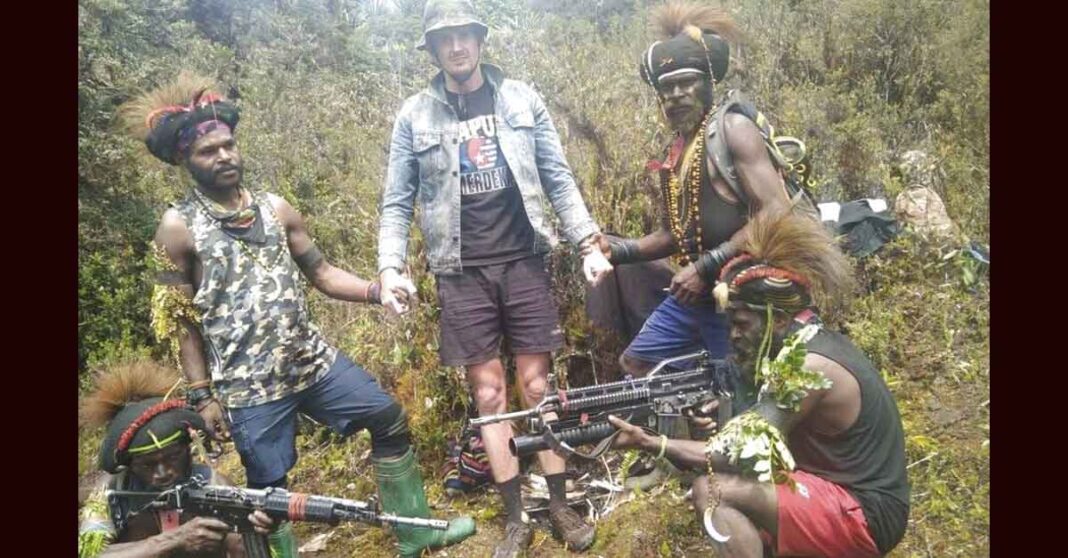JAKARTA, Indonesia (AP) — Separatist rebels in Indonesia’s restive Papua province released photos and videos Tuesday of a man they said is the pilot from New Zealand whom they took hostage last week.
Phillip Mark Mehrtens of Christchurch, a pilot for Indonesian aviation company Susi Air, was abducted by independence fighters from the West Papua Liberation Army, the armed wing of the Free Papua Movement, who stormed his single-engine plane shortly after it landed on a small runway in Paro in remote Nduga district.
The plane, carrying five passengers, was scheduled to pick up 15 construction workers who had been building a health center in Paro after a group of separatist rebels led by Egianus Kogoya threatened to kill them, said Nduga district chief Namia Gwijangge.
“Our plan to evacuate the workers angered the rebels, who responded by setting fire to the plane and seizing the pilot,” said Gwijangge, who was one of the passengers. “We deeply regret this incident.”
Flying is the only practical way of accessing many parts of the mountainous area.
The rebels released all five passengers because they are indigenous Papuans, rebel spokesperson Sebby Sambom said earlier.
Sambom sent videos and photos Tuesday to The Associated Press that showed a group of gunmen, led by Kogoya, setting fire to the plane on the runway. Sitting in the plane’s cockpit, Kogoya said he took the pilot hostage as part of their struggle “to free Papua” from Indonesia.
Another video showed a man identified as Mehrtens standing in a forest surrounded by a group of people armed with rifles, spears and bows and arrows. In a third video, the man was ordered by the rebels to say, “Indonesia must recognize Papua is independent.”
“I took him hostage for Papua independence, not for food or drinks,” Kogoya said in the video with the man standing next to him. “He will be safe with me as long as Indonesia does not use its arms, either from the air or on the ground.”
Coordinating Minister for Political, Security and Legal Affairs Mohammad Mahfud said the government was making every effort to persuade the rebels to release Mehrtens “because the priority is the safety of the hostage.”
“Taking civilians hostage for any reason is unacceptable,” Mahfud said in a video statement late Tuesday. He said persuasion is the best method to ensure hostage safety, but “the government does not rule out other efforts.”
He emphasized the government’s view that Papua is part of Indonesia.
“Papua will forever remain a legitimate part of the unitary state of the Republic of Indonesia,” Mahfud said.
New Zealand’s Ministry of Foreign Affairs and Trade said Wednesday in a statement: “We are aware of the photos and video circulating but won’t be commenting further at this stage.”
Papua police chief Mathius Fakhiri told reporters in Jayapura, the provincial capital, that they are seeking to obtain the pilot’s freedom by involving several community leaders, including tribal and church figures, to build communication and negotiate with the rebels.
Conflicts between Indigenous Papuans and Indonesian security forces are common in the impoverished Papua region, a former Dutch colony in the western part of New Guinea that is ethnically and culturally distinct from much of Indonesia. Papua was incorporated into Indonesia in 1969 after a U.N.-sponsored ballot that was widely seen as a sham. Since then, a low-level insurgency has simmered in the mineral-rich region.
The 15 construction workers, who were rescued on 8 February by security forces, came from other Indonesian islands to build the health center in Paro. They had taken refuge in a priest’s house in the village for several days after rebels threatened to kill them.
Separatists consider civilian workers to be outsiders who sometimes spy for the Indonesian government.
Conflict in the region has risen in the past year, with dozens of rebels, security forces, and civilians killed.



